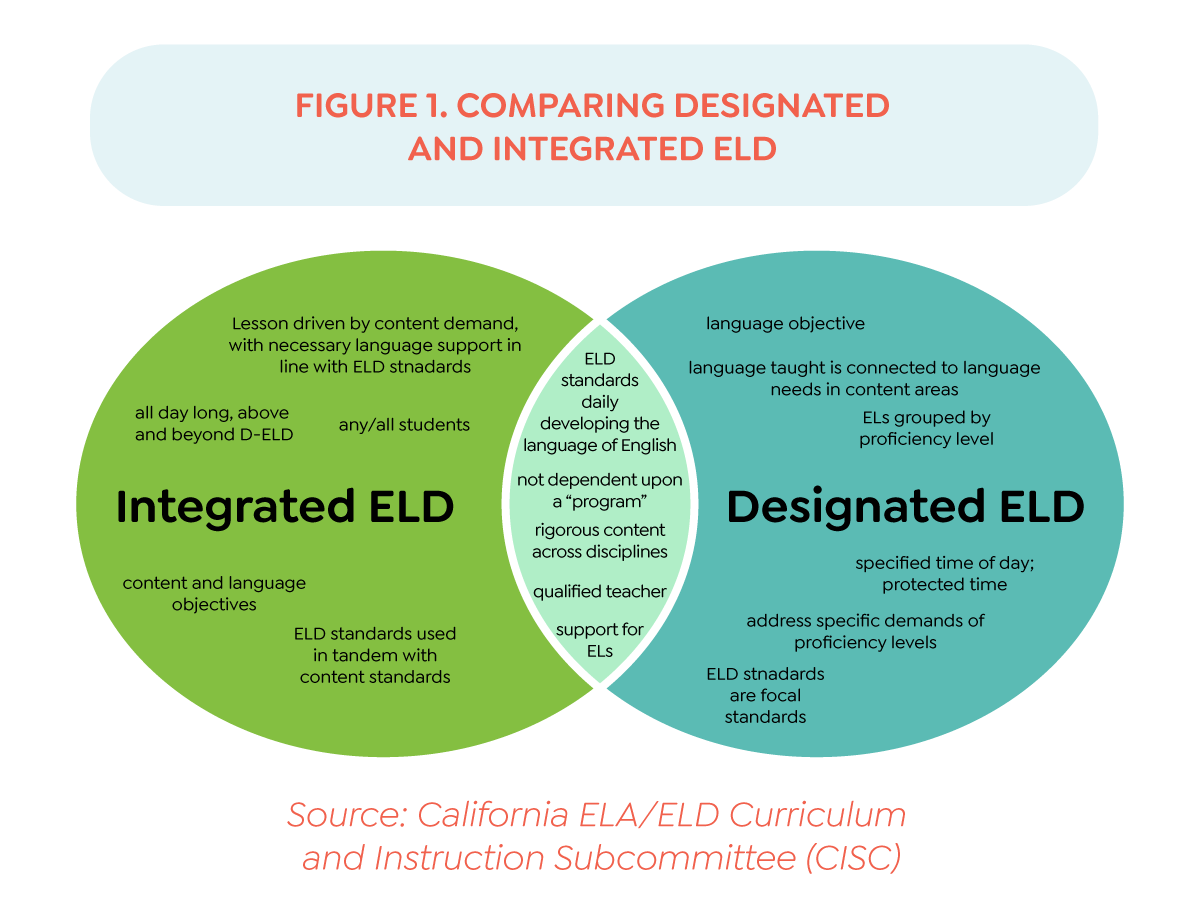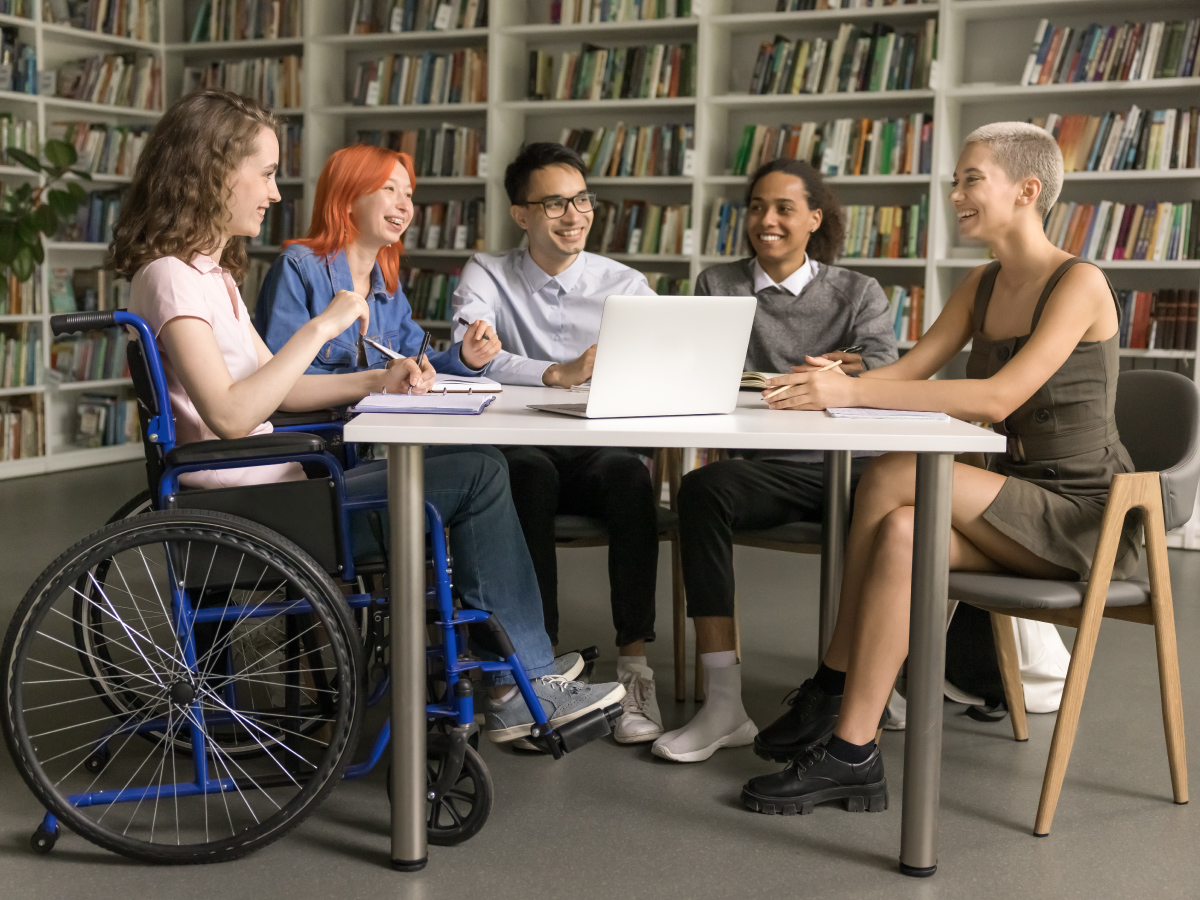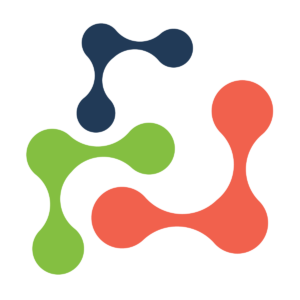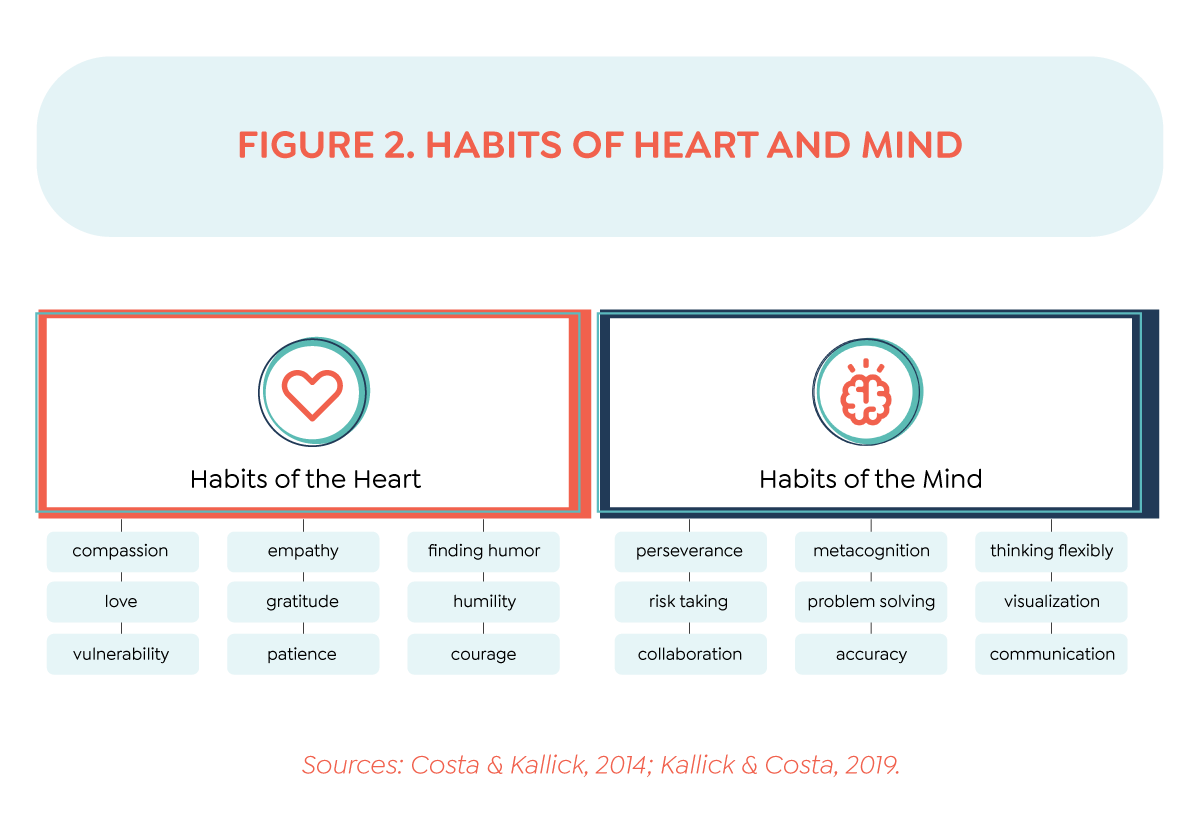At The Core Collaborative, we believe that empowering multilingual learners (MLs) starts with cultivating efficacy and agency across the entire educational system—empowering not just students but also the educators and leaders who support them. Our job-embedded, professional learning services are purposefully designed to equip educators with the research-based tools, strategies, and mindsets they need to ensure every ML thrives in a supportive, learner-centered environment.
We recognize that multilingual learners bring invaluable cultural identities, lived experiences, and unique perspectives to the classroom. Our approach harnesses these strengths as the foundation for learning, helping educators design and implement practices that honor, celebrate, and amplify the voices of MLs. We ensure that MLs are not only achieving language proficiency and academic success but are also developing a deep sense of agency and belonging.
Through our holistic and systemic approach, we help educators and school leaders foster dynamic learning environments where MLs are empowered to lead their own learning journeys, build confidence, and reach their fullest potential. Together, we transform classrooms into spaces where multilingual learners are seen, heard, and inspired to achieve with purpose and pride.
The Problem
The growing population of multilingual learners in the United States represents a critical challenge in education, with profound implications for students’ academic and social development. The terms used to describe students learning in multiple languages reflect the evolving perspectives and priorities in education. While some terms have historically focused on perceived deficits, such as limited proficiency in the target language, others adopt a strengths-based lens, highlighting the valuable skills and cultural richness these students bring to their learning communities. Below is a list of commonly used terms for multilingual learners; some of these terms are synonyms for MLs, while other terms are for specific subgroups of MLs, showcasing the diversity of students in the group and the contexts in which these terms are applied. Understanding and using welcoming, strengths-based terminology is essential for fostering an educational environment that values linguistic diversity and expects excellence of all learners.
Getting to Know Our Multilingual Learners
- Multilingual Learners (MLs): A strengths-based term highlighting students’ ability to learn and communicate in multiple languages.
- English Language Learners (ELLs): A widely used term for students learning English in addition to their home language(s).
- Emergent Bilinguals: A term that emphasizes students’ growing bilingual abilities and their potential to become fully proficient in two languages.
- Dual Language Learners (DLLs): Often used for younger children, such as preschoolers, who are acquiring two languages simultaneously.
- Newcomers: Refers to recently arrived students in a country who may have limited proficiency in the target language.
- Culturally and Linguistically Diverse (CLD) Students: A broad term that acknowledges students’ diverse cultural and linguistic backgrounds.
- English Learners (ELs): A commonly used term in schools and policies to describe students acquiring English proficiency.
- Students with English as an Additional Language (EAL): Commonly used in the United Kingdom to describe students learning English alongside their home languages.
- Heritage Language Learners: Refers to students who grow up in homes where a language other than the target language is spoken and who may be formally or informally learning that heritage language. Heritage language learners commonly have limited formal education in their home language.
- Language Minority Students: A term that refers to students whose home language differs from the dominant or majority language in their region.
- World Language Learners: A term that reflects a global perspective on language learning.
- Emergent Multilinguals: A term highlighting students’ ongoing development of multilingual abilities.
This list illustrates the importance of choosing a language that recognizes and values students’ linguistic and cultural assets while encouraging their growth as multilingual and multicultural individuals.
Understanding MLs requires educators and policymakers to embrace an asset-based perspective that recognizes their potential while addressing systemic barriers to ensure as many opportunities for success as possible.

What Does the Data Say?
English language learners (aka MLs) are one of the fastest-growing student populations in K–12 education in the United States, making up 10.6% of public school students, or approximately 5.3 million individuals, as of 2021. These students bring a rich diversity of languages, cultures, and experiences into classrooms, with Spanish being the most common home language, followed by a wide array of others such as Chinese, Vietnamese, Arabic, and more. While MLs offer unique strengths and perspectives, they face significant challenges in achieving academic success. Persistent opportunity gaps exist, as evidenced by recent NAEP data showing that a majority of MLs perform below the basic level in reading and mathematics compared to their non-ML peers. Additionally, graduation rates for MLs lag significantly behind, with only 71% graduating in 2020 compared to 86% of all students.
These disparities are compounded by structural inequities, such as a lack of teachers trained to support MLs effectively, assessment practices that fail to account for linguistic diversity, and barriers exacerbated during the COVID-19 pandemic. Understanding MLs requires educators and policymakers to embrace an asset-based perspective that recognizes their potential while addressing systemic barriers to ensure as many opportunities for success as possible.
2022 NAEP Performance Data:
- Reading:
- Grade 4: Approximately 70% of ML fourth-graders scored below the NAEP Basic level in reading, compared to 30% of non-ML students (nationsreportcard.gov)
- Grade 8: Approximately 74% of ML eighth-graders scored below the NAEP Basic level in reading, compared to 22% of non-ML students (nationsreportcard.gov).
- Mathematics:
- Grade 4: Approximately 48% of ML fourth-graders scored below the NAEP Basic level in mathematics, compared to 15% of non-ML students (nationsreportcard.gov).
- Grade 8: Approximately 62% of ML eighth-graders scored below the NAEP Basic level in mathematics, compared to 25% of non-ML students (nationsreportcard.gov).
- Impact of the COVID-19 Pandemic:
- Decline in Proficiency: Between the 2019–20 and 2020–21 school years, ELLs in grades 1–5 experienced a six-point decline in overall composite scale scores, while those in grades 6–12 saw a four-point decline (Peña, 2022).
These statistics highlight the achievement gaps that persist between ELLs and non-ELLs across key academic areas, emphasizing the need for targeted support and interventions.
Long-Term English Language Learners
Long-term English learner (or LTEL) is a formal educational classification given to students who have been enrolled in American schools for more than six years, who are not progressing toward English proficiency, and who are struggling academically due to their limited English skills. While the definitions and criteria used by states, districts, and schools to identify LTELs varies, given that these students are typically identified after six or more years of enrollment in formal education, LTELs are most commonly enrolled in middle schools and high schools. These students, often stuck in a cycle of limited language proficiency and inconsistent academic progress, face barriers that extend far beyond the classroom.
The inability to achieve full English proficiency after years in school not only hinders their ability to access rigorous academic content but also limits their opportunities for higher education, career advancement, and full participation in civic life. For LTELs, the impact of being left behind linguistically and academically can lead to feelings of isolation, lower self-esteem, and a reduced sense of agency—all of which compound the inequities they often face due to socioeconomic or cultural factors. Addressing the needs of LTELs is not just an educational imperative but a matter of social justice, demanding a concerted effort to break down systemic barriers and ensure every student has the tools to thrive. LTELs represent a significant portion of the student population in many communities across the country.
Understanding Our LTELs
To create engaging, effective educational experiences for all students, it is essential to know who our students are, particularly those who face unique and systemic challenges. Among these groups, long-term English learners (LTELs) stand out as a population requiring focused attention and support. LTELs are students who, after years in U.S. schools, have not achieved the English proficiency necessary for academic success. This issue is prevalent across the country, especially in middle and high schools, with significant variability in how it manifests in different states and regions.
National and state-level data highlight the prevalence and characteristics of LTELs, revealing consistent patterns in demographics, language proficiency, and socioeconomic factors. These insights not only help educators and policymakers better understand LTELs but also inform the development of targeted interventions to address the barriers they face.
In this report, we explore the prevalence of LTELs nationally, analyze their demographic and linguistic characteristics, and draw attention to the key challenges they encounter. By examining this data, we aim to equip schools and policymakers with the knowledge needed to design programs that meet the needs of LTELs, ensuring they receive the resources and opportunities necessary to thrive academically and beyond.
Characteristics of LTELs Across the United States
Understanding the demographics and characteristics of LTELs at the national level provides critical insights into the challenges faced by this student population. While characteristics vary across states, with WIDA (2019) finding the potential LTEL population ranged from 2% to 24%, trends reveal consistent patterns within the cohort nationwide.

Demographics
- Gender: Boys constitute a higher percentage of LTELs, representing approximately 55–60% of this group nationally (Learning Policy Institute, 2024).
- Socioeconomic Status: A significant majority of LTELs, about 85–90%, come from socioeconomically disadvantaged backgrounds, highlighting the intersection of language development challenges and economic hardship (Learning Policy Institute, 2024).
- Special Education Needs: Approximately 25–30% of LTELs are identified with special education needs, a proportion higher than that of their non-LTEL peers. This dual identification often reflects the compounded challenges LTELs face in accessing language and academic support (Learning Policy Institute, 2024).
- English language learners (ELLs) are often misrepresented in special education programs, either through overidentification or underidentification. This misrepresentation arises from challenges in distinguishing between language acquisition difficulties and actual learning disabilities. Conversely, genuine learning disabilities might be overlooked, attributing academic struggles solely to language barriers. Factors contributing to this issue include biased assessment practices, lack of effective instruction in general education programs, and insufficient teacher training in differentiating between language acquisition challenges and learning disabilities (Colorín Colorado, n.d.; Mid-Atlantic Equity Consortium [MAEC], n.d.; Texas A&M International University [TAMIU], n.d.).
- Home Language: Spanish is the predominant home language among LTELs, accounting for approximately 85–90% of these students. Other languages, including Vietnamese, Arabic, Chinese, and Tagalog, also represent significant portions in specific regions (Learning Policy Institute, 2024; WIDA, 2019).
By recognizing these characteristics at the national level, schools and policymakers can design programs and interventions to meet the complex needs of MLs.
Data-Driven ML Program Design
At the heart of any effective multilingual learner (ML) program is the recognition that context matters. Each school community represents a unique blend of cultural, linguistic, and socioeconomic factors that must guide the design and implementation of interventions. To address the persistent challenges facing MLs—and in particular, the growing population of long-term English learners (LTELs)—schools must adopt culturally and linguistically responsive practices that honor and build upon the assets of every learner.
A significant portion of the LTEL population is disproportionately composed of boys, underscoring the need for tailored interventions that address gender-based barriers. Additionally, socioeconomic disadvantage often compounds the challenges LTELs face, limiting access to critical educational resources and supplemental support. For Spanish-speaking LTELs, targeted strategies that address literacy and academic development are essential, while schools must also recognize and respond to the needs of diverse linguistic groups beyond Spanish speakers.
Complicating this further is the intersection of special education and LTEL identification. Misinterpreting language acquisition struggles as learning disabilities—or vice versa—has contributed to both the over- and underrepresentation of MLs in special education. Culturally responsive assessment practices are essential to ensure accurate identification and appropriate support.
At a systems level, recognizing the substantial number of LTELs nationally has led to critical policy shifts. For example, California’s State Board of Education has incorporated the LTEL category into its School Dashboard, ensuring that LTELs are prioritized in programmatic and budgetary decisions. Similarly, WIDA’s focus on LTELs across its 15 partner states highlights the importance of understanding this population’s demographics, challenges, and needs to inform fair and just educational opportunities.
Key Implications
To reduce the LTEL population and improve outcomes for all MLs, schools and policymakers must integrate the following key implications into their programming:
1. Early and Consistent Identification and Support
Research underscores the importance of identifying MLs’ specific language needs early to provide targeted, high-quality instruction. Screening tools and diagnostic assessments should distinguish between language acquisition challenges and potential learning disabilities, ensuring students are not inappropriately placed in special education.
Implication: Schools must implement systematic, culturally responsive processes to identify MLs early and provide consistent, evidence-based interventions from the beginning of their educational journey.
2. Comprehensive Language Development Plans
Language development should be explicitly planned across all grade levels and subject areas, focusing on both social and academic language. Programs should address reading, writing, speaking, and listening, ensuring integration into content instruction rather than isolating language instruction.
Implication: Schools need to develop long-term, vertically aligned language development plans that aim to accelerate proficiency, reducing the likelihood of students becoming LTELs.
3. Sustained Professional Development for Teachers
Teachers often lack the training to differentiate between language acquisition struggles and academic difficulties, leading to misrepresentation in special education or a lack of adequate support. Professional development should focus on culturally responsive teaching, scaffolding, and formative assessment strategies for MLs.
Implication: Districts should implement ongoing professional learning opportunities that help educators build their capacity to address the diverse needs of MLs, especially those at risk of becoming LTELs.
4. Asset-Based Approach to Learning
ML programming must move away from deficit-based perspectives that focus solely on “fixing” gaps. Instead, programs should celebrate and leverage students’ linguistic and cultural assets as a foundation for learning.
Implication: Instructional strategies should validate and integrate students’ home languages and cultures, encouraging bilingualism or multilingualism rather than treating them as barriers.
5. Family and Community Engagement
Engaging families as partners in education is critical for ML success. Families often feel excluded due to language barriers or cultural differences, yet they play an essential role in supporting academic and linguistic growth.
Implication: Schools must implement multilingual communication strategies and culturally responsive outreach to build partnerships with ML families, encouraging their active participation in their child’s education.
6. Progress Monitor and Target LTEL Risk Factors
Key risk factors for LTELs include limited access to high-quality language instruction, lack of academic monitoring, and insufficient opportunities to develop academic language. Schools should closely monitor MLs’ progress using data-driven approaches, ensuring timely interventions.
Implication: Implementing early-warning systems that track proficiency progress and address stagnation is crucial to reducing LTEL numbers. Progress monitoring should be paired with timely, tailored support.
7. Integration of Language and Content Learning
Evidence shows that language acquisition is most effective when integrated into content instruction. Content-based language instruction engages MLs in meaningful, grade-level work while developing language skills simultaneously.
Implication: Schools should adopt instructional models that embed language objectives into content lessons, with clear supports for MLs to meet both linguistic and academic goals, ultimately reducing the LTEL population.
By designing programs and interventions that reflect the diverse contexts of schools and the lived realities of MLs, educators and policymakers can address the complex needs of LTELs, ensuring access to both linguistic and academic success. Programs that recognize these key insights are not only responsive but also transformative; reducing the LTEL population requires a commitment to systemic change, integrating culturally and linguistically responsive practices into all aspects of programming.

The Core Collaborative Solutions
At The Core Collaborative, we specialize in transforming educational systems to create welcoming and accessible environments where multilingual learners thrive. With expertise in both integrated English language development (content-driven ELD or sheltered instruction) and designated English language development (structured ELD, targeted ESL), we empower schools to enhance teacher efficacy and foster classrooms that celebrate diversity, promote justice, and advance student learning.
Our tailored services are designed to help schools support language development while prioritizing academic success and social-emotional growth. By integrating research-based strategies like translanguaging, formative language assessment, and dispositional learning, we ensure multilingual learners build confidence, agency, and mastery in every aspect of their education.
Our Services: Driving Excellence for MLs
- Comprehensive Needs Assessment
Evaluate current practices to identify strengths and opportunities for growth, aligning systems with the needs of multilingual learners. - Designated and Integrated English Language Instruction
Provide expert support in structured, content-driven language development strategies that promote proficiency while advancing content knowledge. - Formative Language Assessment
Equip teachers with tools to monitor language growth and use data to inform instruction and personalized learning pathways. - Goal Setting for Multilingual Learners
Foster learner agency by co-creating meaningful, asset-based goals that promote language proficiency and academic success. - Translanguaging
Embrace the full linguistic repertoire of multilingual learners to enhance comprehension, expression, and engagement. - Cultivating Dispositions in Multilingual Learners
Develop essential dispositions like perseverance, curiosity, and self-efficacy to support long-term success in academics and beyond.
Why Partner with The Core Collaborative?
- Customized Support: Our solutions are tailored to meet the unique needs of your school community.
- Justice-Driven Practices: We prioritize culturally responsive strategies that celebrate diversity and foster belonging.
- Sustainable Impact: Our focus on teacher efficacy and learner agency ensures lasting results that benefit all stakeholders.
Let’s work together to create learning environments where multilingual learners are empowered to excel academically, socially, and emotionally.
By identifying strengths alongside areas for growth, the process ensures that successful practices are celebrated and scaled. It creates a foundation for continuous improvement, ensuring that MLs have the support necessary to thrive linguistically, academically, and socially.
ML Comprehensive Needs Assessment
In the effort to ensure that multilingual learners (MLs) receive high-quality language acquisition support, a comprehensive needs assessment provides a vital roadmap. By systematically examining strengths, areas of growth, and opportunities for improvement, this assessment empowers educators, administrators, and stakeholders to refine and sustain effective ML programming.
Context Matters: Each Learning Community Is Unique
At the heart of this comprehensive needs assessment is a deep commitment to culturally and linguistically responsive practices. Ensuring every multilingual learner (ML) is valued, supported, and empowered to succeed. Recognizing the diversity of our nation’s ML population—many schools serve student bodies who speak as many as 30 different languages—underscores the importance of designing solutions tailored to each school’s unique context. No two schools are the same, and their ML populations bring distinct strengths, challenges, and opportunities. Addressing gaps in language acquisition support is not only a matter of urgency but also of justice, ensuring that MLs achieve both linguistic and academic success. This collaborative process invites all stakeholders—teachers, school leaders, parents and caregivers, and students—to come together to reflect, contribute, and create solutions that honor the unique needs of every learner and learning environment.
Our Needs Assessment Process
 The needs assessment process is a collaborative that honors the unique strengths and challenges of each learning community, ensuring that culturally and linguistically responsive solutions are tailored to support the success of every multilingual learner.
The needs assessment process is a collaborative that honors the unique strengths and challenges of each learning community, ensuring that culturally and linguistically responsive solutions are tailored to support the success of every multilingual learner.
Step 1: Forming the Needs Assessment Team
A cross-functional team is formed to lead the process, including
- English Language Development (ELD) specialists,
- general education teachers with experience teaching MLs,
- school and district administrators,
- community liaisons fluent in students’ home languages, and
- families and students who share lived experiences.
This team is tasked with designing assessment tools, analyzing data, and making recommendations.
Step 2: Data Collection
A triangulated approach ensures a robust understanding of the program’s quality through quantitative and qualitative methods.
1. Quantitative Data:
- Student Performance Data: Analyze MLs’ growth on language proficiency assessments (e.g., WIDA ACCESS), academic benchmarks, and standardized tests.
- Enrollment and Participation Rates: Examine enrollment trends in ELD programs, participation in advanced coursework, and rates of reclassification as English proficient.
- Staffing and Resources: Assess teacher-to-student ratios, certification levels of ELD instructors, and availability of instructional materials aligned to students’ linguistic needs.
2. Qualitative Data:
- Surveys and Interviews: Distribute surveys to students, families, and teachers to gather perceptions of the program’s strengths and challenges. Conduct in-depth interviews with focus groups for richer insights.
- Classroom Observations: Utilize a research-based observation tool to evaluate instructional strategies, cultural responsiveness, and alignment to language acquisition standards.
- Case Studies: Develop student profiles highlighting linguistic, cultural, and academic experiences.
Step 3: Analyzing the Data
The collected data is systematically organized and analyzed using thematic coding for qualitative information and statistical software for quantitative results. Key focus areas include:
- Program Strengths: Identifying successful practices that support language acquisition and overall student success.
- Instruction: Alignment to ELD proficiency standards (e.g., WIDA, state-specific standards) as well as effectiveness of differentiation and scaffolding.
- Justice: Access to rigorous content and resources.
- Connections: Family engagement and communication practices.
- Continuous Improvement: Ongoing, job-embedded professional learning opportunities for educators.
Step 4: Engaging Community Members
The findings are shared with learning community members through:
- Interactive Workshops: Facilitating discussions around the data and fostering collaborative brainstorming for solutions.
- Community Forums: Providing families and community members an opportunity to validate findings and prioritize actions.
Step 5: Developing an Action Plan
The needs assessment team synthesizes insights to draft an action plan. This plan includes:
- Short-Term Goals: Address immediate gaps, such as training teachers in sheltered instruction strategies or updating materials.
- Long-Term Goals: Build systemic capacity by integrating culturally sustaining practices and increasing bilingual staffing.
- Metrics for Success: Identify benchmarks to measure progress, including periodic reviews of student growth and program effectiveness.
Outcomes and Sustainability
The comprehensive needs assessment culminates in a detailed report outlining actionable recommendations. By identifying strengths alongside areas for growth, the process ensures that successful practices are celebrated and scaled. It creates a foundation for continuous improvement, ensuring that MLs have the support necessary to thrive linguistically, academically, and socially. By centering justice and stakeholder voice, the assessment not only evaluates the program’s current state but also charts a path forward, rooted in shared responsibility and a commitment to excellence for all learners.
Needs Assessment Goals:
- Identify Program Strengths: Highlight practices, resources, and structures that are effectively supporting MLs’ language acquisition and academic growth.
- Evaluate Program Effectiveness: Assess whether the ML program aligns with research-based best practices in language acquisition.
- Identify Barriers: Understand systemic and instructional challenges hindering MLs’ language and academic growth.
- Gather Stakeholder Input: Amplify the voices of MLs, their families, and educators to ensure programming meets community needs.
- Highlight Opportunities: Uncover innovative strategies and resources that can further strengthen the program.

Designated and Integrated ELD Instruction
Multilingual learners (MLs) bring unique linguistic and cultural strengths to the classroom, but they also face challenges in navigating academic content in a new language. To support their success, schools adopt two complementary approaches: designated and integrated English language development (ELD) instruction. These approaches work hand-in-hand to build language proficiency and academic achievement.
The combination of designated ELD (targeted language instruction, structured language development, etc.) and integrated ELD (sheltered instruction, content-based language instruction, etc.) creates a comprehensive support system for ML students. By providing explicit language instruction at the students’ level alongside content-area language learning, educators can address the diverse needs of these learners more effectively. The dual approach ensures that students are not only learning the language but also applying it in real-world contexts, which is critical for their academic and social development. As noted by Edelman and colleagues, the innovative ELD model implemented in schools is based on research findings that underscore the importance of both D-ELD and I-ELD strategies (Edelman et al., 2022).
By understanding the differences, benefits, and necessity of these approaches, educators can create welcoming and accessible learning environments where MLs thrive.

Designated ELD Instruction
In designated ELD instruction, students receive focused, intentional support tailored to their specific language development level. This approach provides a dedicated time in the school day for MLs to engage in structured lessons targeting English language acquisition, specifically the structure and function of the English language at their language level. Ideally taught by specialists or trained educators, designated instruction is separate from content classes but often uses themes or topics from other subjects to make learning relevant and connected.
- Definition: Designated English language instruction focuses on explicitly developing language skills across the domains of reading, writing, speaking, and listening at a student’s instructional language level.
- Context: It is a specific block in the schedule dedicated to supporting English language proficiency. Designated ELD ideally has a curriculum that includes a scope and sequence driven by the language proficiency levels in reading, writing, listening, and speaking.
- Focus Areas:
- Vocabulary development
- Grammar and syntax
- Academic language structures
- Oral language development
- Reading and writing proficiency at various levels
Integrated ELD Instruction
Language learning doesn’t stop when students leave their designated ELD instruction classroom. Integrated ELD instruction ensures that language development continues throughout the day, embedded into every subject area. This approach recognizes that all teachers are teachers of language, and it provides MLs with opportunities to apply and expand their language skills while learning academic content.
- Definition: Integrated ELD embeds English language development into content areas, such as math, science, social studies, and English language arts. The goal of integrated ELD is to make the content accessible and comprehensible to MLs at all language proficiency levels.
- Context: Language instruction happens throughout the school day in all classes through research-proven strategies that are utilized by subject area teachers to make the content accessible and comprehensible.
- Focus Areas:
- Embedding language objectives into content lessons
- Supporting MLs in using academic language specific to each discipline
- Scaffolding instruction to make content accessible (e.g., visuals, sentence frames)
- Encouraging content-rich discussions to practice oral language skills
The Benefits of Designated and Integrated ELD Instruction
Providing effective support for MLs requires balancing explicit ELD instruction with authentic application. Each approach offers unique benefits, and together they create a holistic framework for language development.
- Benefits of Designated ELD Instruction:
- Focused, individualized support helps students develop English language skills.
- Explicit teaching of academic language and structures supports access to content.
- Safe spaces for practicing language build MLs’ confidence and proficiency.
- Benefits of Integrated ELD Instruction:
- Embeds language learning in meaningful, real-world contexts for deeper engagement.
- Provides consistent opportunities to use language across subject areas.
- Ensures that content is accessible and comprehensible for a wide range of English language levels.
- Equips MLs to develop both content knowledge and academic language simultaneously.
- Promotes justice by ensuring MLs can participate alongside their peers.
Why Both Approaches Are Needed
When educators weave designated and integrated ELD instruction into a cohesive framework, they lay the groundwork for deep and meaningful learning. Designated English language instruction (ELD) serves as the foundation, equipping MLs with the tools to navigate their new linguistic environment. Integrated instruction reinforces and extends those skills, helping students apply their learning in academic contexts.
By addressing both language development and content mastery, schools ensure that MLs have the resources to achieve their fullest potential. This dual approach recognizes the diversity of student needs and fosters a sense of belonging, empowering MLs to excel linguistically, academically, and socially. Together, designated and integrated ML instruction create a comprehensive support system that prepares MLs not just to succeed but to thrive.
Goals for Designated and Integrated ELD Instruction
- Build Language Proficiency Through Explicit Instruction
Provide targeted, structured language development opportunities (designated ELD) tailored to the proficiency levels of multilingual learners, ensuring they build a strong foundation in English. - Integrate Language Learning with Academic Content
Use content-driven language instruction (integrated ELD) to help multilingual learners simultaneously develop language skills and master academic concepts, ensuring meaningful application of their language abilities. - Promote Real-World Language Application
Design opportunities for students to practice and apply language skills in authentic, real-world contexts, fostering deeper engagement and social-emotional development. - Support Flexible Grouping with a Master Schedule
Develop a master schedule that accommodates flexible “walk-to-learn” grouping models, ensuring that multilingual learners receive the appropriate level of support and instruction aligned with their specific language development needs. - Create Welcoming and Accessible Classrooms
Develop learning environments that celebrate the linguistic and cultural strengths of multilingual learners, promoting belonging, confidence, and academic success.

Formative Language Assessment
At The Core Collaborative, we empower schools and districts to transform language assessment practices through our comprehensive support in developing formative language assessment capacity. Guided by research-based strategies and an asset-based approach, our services are designed to help educators foster language development for multilingual learners (MLs) while integrating academic content seamlessly.
Formative language assessment is not just a process—it’s a mindset that cultivates engaging, accessible learning environments, strengthens teacher expertise, and amplifies student agency. Umansky and Reardon (2014) emphasize that “many accountability mechanisms, educational services, and policies are organized to promote and incentivize rapid and universal English learner reclassification.” This statement reflects the systemic pressures that schools face to reclassify ELs quickly, which can sometimes overlook the individual language development needs of students. Formative language assessments are crucial in identifying when a student is truly ready for reclassification, rather than relying solely on standardized tests that may not capture the full scope of a student’s language abilities.
Through tailored professional learning, evidence-based resources, and collaborative coaching, we help schools build systems that support the continuous growth of multilingual learners. Our work is rooted in inclusivity and justice, ensuring every learner’s strengths are celebrated and leveraged to support their progress. By partnering with us, educators gain the tools and confidence to design, implement, and interpret formative assessments that drive instruction, improve outcomes, and prepare students for success in achieving language proficiency and beyond.
Together, we can create classrooms where every multilingual learner thrives—academically, linguistically, and socially.
- Balance Language and Content
Ensure students develop both linguistic proficiency and subject-matter knowledge simultaneously. - Promote Multilingual Learner Agency and Growth
Create classroom environments where formative language assessments empower multilingual learners to reflect on their progress, set goals, and take ownership of their learning journey.
What Is Formative Language Assessment?
Formative language assessment is a continuous, evidence-based process that supports multilingual learners (MLs) in their language development. It is designed to provide ongoing insights into students’ progress toward language proficiency by identifying strengths, areas for growth, and next steps in their learning. Formative language assessments are not high stakes or summative; rather, they are embedded within instruction and provide real-time feedback to students and educators.
Key Features of Formative Language Assessment:
- Ongoing Process: Conducted regularly to monitor progress.
- Embedded in Instruction: Occurs naturally within teaching and learning activities.
- Individualized Feedback: Helps students understand their growth and areas to focus on.
- Actionable Data: Guides instructional decisions and supports goal setting.
- Domain Specific: Targets the four language domains: reading, writing, speaking, and listening.
Tools and Methods:
- Checklists and Rubrics: Aligned with English language proficiency standards.
- Peer and Self-Assessments: Encourage metacognition and ownership of learning.
- Observations: Capture real-time language use during lessons.
- Performance Tasks: Contextualized tasks that integrate content and language.
Reclassification of Multilingual Learners
Reclassification is the process of transitioning MLs from an English learner (EL) designation to being considered proficient in English. It typically occurs when students demonstrate that they have met specific language proficiency criteria established by the district or state.
How Formative Language Assessment Supports Reclassification:
- Progress Monitoring: Tracks a student’s ongoing language development, providing evidence of growth in proficiency.
- Aligned to Reclassification Criteria: Many states or districts use language proficiency assessments, like WIDA ACCESS or ELPA21, as part of reclassification. Formative assessment helps students build the skills necessary to meet these benchmarks.
- Identifying Gaps: Highlights areas where students need additional support to achieve proficiency.
- Supporting Instructional Adjustments: Helps educators tailor language instruction to meet individual student needs.
- Boosting Confidence: Regular feedback enables students to recognize their progress, preparing them for summative assessments tied to reclassification.
Considerations for Equal Access in Reclassification:
- Holistic Evidence: Beyond standardized test scores, formative assessments provide a fuller picture of a student’s readiness for reclassification.
- Cultural and Linguistic Assets: Emphasizes what students can do, avoiding a deficit-based perspective.
- Ongoing Support: Ensures that reclassified students continue to receive academic and emotional support as they transition out of EL services.
By integrating formative language assessment into everyday instruction, educators can better support MLs in achieving proficiency, while also ensuring that the reclassification process is fair and reflective of a student’s actual language abilities.
Goals for Formative Language Assessment Support
- Foster an Asset-Based Approach to Language Assessment
Equip educators with strategies to design and implement formative language assessments that celebrate multilingual learners’ strengths and address their individual language development needs. - Build Educator Capacity for Just Assessment Practices
Provide tailored professional learning and collaborative coaching to strengthen teachers’ expertise in developing and using formative assessments to drive instruction and support multilingual learners’ progress. - Support Evidence-Based Reclassification Decisions
Develop systems that use formative language assessments to determine when students are genuinely ready for reclassification, moving beyond standardized testing to capture the full scope of language abilities. - Integrate Language Development with Academic Content
Design formative assessments that align language learning with academic content, ensuring that multilingual learners can demonstrate their knowledge and skills in meaningful, context-rich ways across disciplines.

Goal Setting for Multilingual Learners
Goal setting for multilingual learners (MLs) is a comprehensive, student-centered approach designed to empower them to understand their current position on the language acquisition continuum, articulate their progress, and set actionable goals that move them toward reclassification. The power of goal setting for English language learners (ELLs) in their language acquisition journey is pivotal, particularly as it relates to their reclassification as fluent, English-proficient students. Research indicates that goal setting enhances students’ self-efficacy and motivation, which are critical components for successful language acquisition. For instance, one study highlights that “students who set specific and challenging goals are more likely to achieve higher levels of performance” (Shi, 2021). This assertion underscores the importance of goal orientation in fostering a proactive learning environment for ELLs, enabling them to take ownership of their language learning process.
Goal setting for MLs shifts the reclassification process from a stressful, compliance-driven milestone to an ongoing, collaborative partnership between students, teachers, and families. The interplay between goal setting, supportive learning environments, and effective reclassification policies plays a vital role in the language acquisition journey of MLs. By integrating goal setting and reflection into daily learning, multilingual learners gain the tools and confidence to actively track their progress and advocate for their growth. This approach not only demystifies the reclassification process but positions MLs as active participants in their learning journey, reinforcing their agency and sense of accomplishment. Ultimately, it creates a welcoming environment where language development is celebrated as a strength and every learner is supported in reaching their full potential.
Goal Setting for MLs Unpacked
 1. Initial Assessment and Orientation
1. Initial Assessment and Orientation
- Purpose: Help MLs understand their current proficiency level and the reclassification criteria.
- Action Steps:
- Conduct a comprehensive orientation using student-friendly rubrics and visuals (e.g., WIDA’s Can Do Descriptors or proficiency-level descriptors).
- Review recent language assessment results (e.g., ACCESS, ELPAC, ELPA21, NYSESLAT) with students to clarify strengths and areas for growth.
- Introduce the language acquisition continuum in a way that is developmentally appropriate and affirming.
2. Co-Construction of Success Criteria
- Purpose: Engage MLs in understanding what success looks like at each stage of proficiency.
- Action Steps:
- Collaborate with students to unpack performance descriptors across the four language domains: listening, speaking, reading, and writing.
- Define what “progress” and “mastery” look like for their next step.
- Use real-world examples, such as student work samples, to anchor understanding.
3. Personalized Goal Setting
- Purpose: Empower MLs to set measurable, realistic, and meaningful goals.
- Action Steps:
- Guide students in setting SMARTIE goals (Specific, Measurable, Achievable, Relevant, Time-bound, Inclusive, and Equitable).
- Encourage goals aligned to both language domains and academic content (e.g., “I will write a paragraph in science using transition words and specific vocabulary like ‘hypothesis’ and ‘evidence’”).
- Establish both short-term and long-term goals connected to reclassification criteria.
4. Progress Monitoring Tools
- Purpose: Track progress toward goals and provide actionable feedback.
- Action Steps:
- Develop student-friendly tracking tools, such as goal-setting journals, progress charts, or digital portfolios.
- Integrate peer and teacher feedback loops where students can reflect on and revise their goals.
- Celebrate milestones and document incremental progress to motivate learners.
5. Scaffolded Feedback and Reflection
- Purpose: Build metacognitive awareness and self-regulation skills.
- Action Steps:
- Provide scaffolded sentence stems or prompts for self-reflection, such as:
- “One thing I’m proud of is …”
- “A strategy that helped me improve was …”
- “My next step is to …”
- Incorporate peer and teacher conferencing to discuss progress and recalibrate goals.
- Provide scaffolded sentence stems or prompts for self-reflection, such as:
6. Reclassification Readiness Checkpoints
- Purpose: Ensure students understand their progress toward reclassification and feel supported in achieving it.
- Action Steps:
- Host regular reclassification readiness conferences where students review their progress, reflect on growth, and identify final steps needed for reclassification.
- Align progress monitoring to state/district-specific reclassification criteria and explicitly discuss these benchmarks with students.
- Provide clear action steps if a student is not yet ready for reclassification, emphasizing growth rather than deficit.
7. Integration of Families and Caregivers
- Purpose: Foster a collaborative support system at home and school.
- Action Steps:
- Provide families with an overview of the language acquisition continuum and reclassification process.
- Share student goals and progress in multilingual formats, ensuring accessibility for families.
- Offer tips and resources for families to support native and English language practice at home.
8. Professional Development for Educators
- Purpose: Equip teachers with tools to support MLs in the goal-setting process.
- Action Steps:
- Train teachers in facilitating goal-setting conferences and integrating language goals into daily instruction.
- Provide examples of culturally responsive scaffolding strategies that align with goal-setting practices.
- Offer coaching on providing actionable, asset-based feedback to MLs.
Benefits of the Service
- Empowered Learners: MLs develop agency by understanding their progress and owning their learning journey.
- Transparency: Clear communication about the reclassification process ensures all students have the opportunity to succeed.
- Actionable Insights: Teachers and students collaboratively identify strengths and areas for growth.
- Increased Reclassification Rates: Targeted, student-driven goals support measurable progress toward reclassification benchmarks.
This service transforms the reclassification process from a high-stakes event to a collaborative, empowering journey where MLs feel supported, valued, and equipped to succeed.
Goals for This Service
- Empower Multilingual Learners Through Agency and Ownership
Support MLs in understanding their language proficiency levels and setting personalized, SMARTIE goals, enabling them to take ownership of their learning journey and progress toward reclassification. - Foster Clarity in the Reclassification Process
Demystify reclassification criteria by providing students with transparent, student-friendly rubrics and tools that emphasize growth and strengths, ensuring a just and welcoming approach to language development. - Enhance Student Progress Through Reflection and Feedback
Develop tools and processes, such as progress monitoring charts and scaffolded self-reflection prompts, to help students track their growth, celebrate milestones, and refine their goals in collaboration with teachers and peers. - Create Collaborative Support Systems with Families and Educators
Engage families as active partners by sharing multilingual resources and progress updates while equipping educators with professional development to support goal-setting practices rooted in culturally responsive and asset-based strategies. - Promote Language and Academic Integration
Align language goals with academic content across listening, speaking, reading, and writing domains, ensuring students are developing linguistic proficiency while mastering academic standards, fostering meaningful and measurable growth.
Translanguaging disrupts traditional, deficit-based approaches to ML education that often prioritize English-only instruction. Instead, it empowers students by positioning their multilingualism as a strength, not a barrier.
Translanguaging
Translanguaging, as a dynamic pedagogical approach, emphasizes the importance of learner agency, particularly for English language learners (ELLs). It allows students to utilize their entire linguistic repertoire, fostering a more welcoming and accessible learning environment. One significant assertion is that “translanguaging captures such changing dynamics and highlights the language user’s agency in exploiting their communicative repertoire holistically and in an integrated and coordinated way” (Tian & Li, 2024). This perspective underscores the necessity of recognizing and valuing the diverse linguistic backgrounds of students, which can enhance their engagement and participation in the learning process.
Rather than treating languages as separate, bounded systems, translanguaging views a learner’s language practices as an integrated whole, allowing them to fluidly use their home language(s) and English to make meaning, express themselves, and learn.
In classrooms, translanguaging occurs when students and teachers intentionally use multiple languages to
- clarify concepts,
- build understanding,
- develop new ideas,
- express knowledge.
For example, a student might read a text in English but discuss it in their home language or draft an outline in one language and write in another. This approach encourages flexibility and authenticity in how MLs engage with content and language.
Why Is Translanguaging Important to Serve MLs?
 1. Affirms Linguistic and Cultural Identity
1. Affirms Linguistic and Cultural Identity
Translanguaging validates the linguistic and cultural assets that MLs bring to the classroom. By encouraging the use of their home language(s), students feel valued and included, fostering a sense of belonging and confidence.
2. Boosts Cognitive and Academic Development
Research shows that drawing on multiple languages enhances cognitive flexibility, critical thinking, and problem-solving. When students use all their linguistic resources, they deepen their understanding of content and language.
3. Supports Language Development
Continuing to learn and use the home language facilitates the process of developing proficiency in a second language as well as mastering content. For example, using the home language to discuss new vocabulary words introduced in English helps anchor those terms and aids in comprehension, retention, and the transfer of knowledge and skills across languages.
4. Promotes Justice
Translanguaging disrupts traditional, deficit-based approaches to ML education that often prioritize English-only instruction. Instead, it empowers students by positioning their multilingualism as a strength, not a barrier.
5. Fosters Deeper Learning
By allowing students to engage with material in a way that builds on the linguistic practices and strengths they are bringing with them, translanguaging enhances comprehension and enables students to express complex ideas more fully.
6. Builds Bridges Between Home and School
Translanguaging practices encourage stronger connections between students’ home environments and school learning. Parents and caregivers who speak languages other than English can better support their children’s education when those languages are integrated into classroom activities.
Examples of Translanguaging in Action
- Collaborative Learning: Students work in pairs or groups, discussing content in their home language while taking notes in English.
- Bilingual Texts: Providing resources in multiple languages, such as dual-language books or multilingual glossaries.
- Multilingual Writing: Allowing students to brainstorm or outline in one language and draft or finalize their work in another.
- Language Pairing: Pairing students with different language proficiencies to learn from each other using both their home languages and English.

Why It Matters
Translanguaging is more than a strategy—it’s a framework for creating welcoming, accessible classrooms that honor the diverse identities and abilities of multilingual learners. By implementing translanguaging practices, educators can unlock the full potential of MLs, helping them thrive academically while affirming their linguistic and cultural heritage.
Goals for Translanguaging
- Promote Learner Agency and Engagement
Empower multilingual learners (MLs) to draw on their entire linguistic repertoire, fostering a sense of agency, authenticity, and confidence in their ability to learn, communicate, and express knowledge. - Enhance Conceptual Understanding and Knowledge Construction
Use translanguaging strategies to clarify complex concepts, build deeper understanding, and encourage critical thinking by leveraging students’ home language(s) alongside English. - Foster a Welcoming and Accessible Learning Environment
Create classrooms that celebrate and value the diverse linguistic and cultural backgrounds of MLs, ensuring all students feel seen, respected, and capable of contributing meaningfully. - Support Academic and Linguistic Development
Integrate translanguaging practices to facilitate both language acquisition and content mastery, enabling students to fluidly apply their knowledge across multiple languages and contexts. - Encourage Flexible and Dynamic Communication
Cultivate opportunities for MLs to engage with learning materials and tasks in ways that reflect their natural language practices, promoting authenticity and meaningful participation in academic activities.
Fostering learner identity—a sense of belonging and agency in the learning process—is crucial for multilingual learners.
Cultivating Dispositions in Multilingual Learners
“Learning dispositions reflect the learning identity of a learner, and at the same time they enhance learning and result in further learning” (Rolé, 2020). This underscores the importance of fostering positive learning dispositions among MLs, as these dispositions can significantly impact their engagement and persistence in language acquisition. When MLs develop a strong learning identity, they are more likely to embrace challenges and seek out opportunities for growth, which is essential in mastering a new language. Our approach emphasizes culturally responsive practices, learning transfer, and the cultivation of strong learner identities, ensuring every student is equipped to succeed academically and beyond.
Today’s classrooms are interconnected and culturally diverse. Multilingual learners bring valuable linguistic and cultural assets that enrich learning. However, to fully leverage their potential and foster both academic success and personal growth, educators must intentionally cultivate dispositions that enable MLs to engage in learning transfer and develop strong learner identities.
Why Do Dispositions Matter?
Learning dispositions are “defined as ‘orientation to learning’ that manifests ‘complex sets of adults’ motivations, beliefs and attitudes toward learning’” (Evans & White, 2010). This definition illustrates the multifaceted nature of learning dispositions and their relevance to ELLs. Understanding the motivations and beliefs that shape ELLs’ learning experiences can help educators design interventions that promote positive dispositions, thereby enhancing language acquisition and academic success.
For MLs, these include resilience, adaptability, curiosity, and self-efficacy. When nurtured, such dispositions empower learners to navigate complex tasks, transfer knowledge across languages and disciplines, and build confidence in their abilities.
For example, a curious student might explore a science concept they learned in English. Then, they might consider how it applies in their home language. Similarly, resilience can help a learner persevere through the challenges of academic language acquisition while maintaining a positive self-concept.

Learning Transfer and Dispositions
Learning transfer—the ability to apply knowledge and skills in new and varied contexts—is a cornerstone of deep learning. Dispositions like metacognition, critical thinking, and openness to feedback are vital in enabling MLs to transfer learning. When MLs recognize patterns across languages or subjects, they draw on prior knowledge and adapt it to novel situations. For example, understanding narrative structures in one language can enhance comprehension and composition in another.
Educators play a pivotal role by creating opportunities for MLs to practice these dispositions. The Core Collaborative provides resources and training for teachers to explicitly teach strategies like self-questioning, reflection, and goal setting. Equipping learners to become active participants in their educational journeys.
Dispositions and Learner Identity
Fostering learner identity—a sense of belonging and agency in the learning process—is crucial for multilingual learners. A positive learner identity affirms students’ cultural backgrounds while encouraging them to see themselves as capable and valued contributors to the learning community. Dispositions like collaboration and empathy enable MLs to engage meaningfully with peers and teachers, bridging linguistic and cultural divides.
By integrating culturally responsive practices, educators can affirm MLs’ identities and inspire pride in their multilingualism. The Core Collaborative supports educators with specific workshops and tools to implement culturally responsive teaching practices. For example, inviting students to share stories or problem-solving methods from their cultural contexts validates their unique perspectives and reinforces their sense of identity.
A Call to Action
To truly unlock the potential of multilingual learners, educators must go beyond teaching content and embrace the transformative power of cultivating dispositions. These habits of mind—resilience, adaptability, critical thinking, and more—are the foundation for learning transfer and the development of a strong, affirming learner identity that is anchored in cultural identity. When dispositions are seamlessly integrated into instruction, supported by culturally responsive practices, and modeled with intentionality, MLs are not just positioned to succeed academically—they are empowered to navigate the complexities of an interconnected world with confidence and purpose. The work begins with educators who recognize that fostering these dispositions is not an add-on but a cornerstone of impactful teaching.
To support MLs in developing dispositions that enhance learning transfer and learner identity, educators must do the following:
- Integrate Dispositions into Instruction: Embed habits of mind like resilience, adaptability, and critical thinking into everyday learning experiences.
- Leverage Culturally Responsive Practices: Affirm MLs’ linguistic and cultural assets through curricula and classroom activities that honor and reflect their experiences and heritage.
- Model and Scaffold Dispositions: Provide explicit teaching and modeling of metacognitive strategies, goal setting, and self-reflection.
- Create Collaborative Opportunities: Foster environments where MLs can engage in dialogue and problem-solving with peers, leveraging diverse perspectives.
Educators can empower MLs by prioritizing the development of dispositions. This helps them thrive both academically and personally. It also enables them to transfer learning across contexts and build strong, affirming learner identities.
Goals for Cultivating Dispositions in Multilingual Learners
- Develop Resilience, Adaptability, and Curiosity
Foster dispositions like resilience, adaptability, and curiosity to empower multilingual learners to embrace challenges, persist in their language acquisition journey, and engage deeply with their learning experiences. - Promote Learning Transfer Across Languages and Contexts
Equip MLs with dispositions such as metacognition, critical thinking, and self-efficacy to recognize patterns, apply prior knowledge, and adapt skills across languages, disciplines, and real-world contexts. - Build Strong Learner Identities
Strengthen MLs’ sense of agency and belonging by affirming their cultural and linguistic backgrounds, helping them see themselves as capable, valued contributors to their learning communities. - Enhance Collaboration and Empathy
Cultivate dispositions like collaboration, empathy, and communication to help MLs engage meaningfully with peers and teachers, bridging linguistic and cultural divides while fostering inclusivity and mutual respect. - Integrate Culturally Responsive Practices into Instruction
Provide educators with strategies and tools to explicitly teach and model habits of mind—such as perseverance, problem-solving, and self-reflection—ensuring these dispositions are seamlessly embedded into culturally affirming, impactful instruction.
These practices not only enhance language proficiency and academic achievement but also empower students to see their multilingualism as a strength, cultivating a sense of belonging and agency in their educational journey.
Let’s Be Intentional
At The Core Collaborative, we believe that every multilingual learner (ML) deserves a welcoming, empowering educational experience that meets them where they are in their learning. This white paper has explored the challenges and opportunities facing MLs, highlighting the critical role that dispositions, culturally responsive practices, and intentional instruction play in supporting their success.
Through services such as comprehensive needs assessments and support for designated and integrated English language instruction, formative language assessments, goal setting, and translanguaging strategies, The Core Collaborative partners with schools to create transformative learning environments. These practices not only enhance language proficiency and academic achievement but also empower students to see their multilingualism as a strength, cultivating a sense of belonging and agency in their educational journey.
We invite you to join us in this essential work of fostering justice, cultivating learner identities, and empowering multilingual learners to thrive. Together, we can ensure that every student has the opportunity to achieve their dreams and contribute to a dynamic future.
Let’s transform education for multilingual learners—one classroom, one teacher, and one student at a time.
Contact Information:
References
- Bloomberg, P., & Pitchford, B. (2023). Leading impact teams: Building a culture of efficacy and agency. Mimi and Todd Press.
- Bloomberg, P., Vandas, K., Twyman, I., McGee, I., Dukes, V., Carrillo Fairchild, R., Hamilton, C., & Wells, I. (2022). Amplify learner voice through culturally responsive and sustaining assessment. Mimi and Todd Press.
- Colorín Colorado. (n.d.). Reasons for misidentification of special needs among English language learners. Retrieved from https://www.colorincolorado.org/article/reasons-misidentification-special-needs-among-ells
- Costa, A., & Kallick, B. (2014). Dispositions: Reframing teaching and learning. Corwin.
- Edelman, E. R., Amirazizi, S. A., Feinberg, D. K., Quirk, M., Scheller, J., Pagán, C. R.,& Persoon, J. (2022). A comparison of integrated and designated eld models on second and third graders’ oral English language proficiency. TESOL Journal, 13(3). https://doi.org/10.1002/tesj.659
- Evans K., Waite E. (2010). Adult learning in and through the workplace. In Ecclestone K., Biesta G., Hughes M. (Eds.), Transitions and learning through the lifecourse (pp. 162-181). New York, NY: Routledge.
- Kallick, B., & Costa, A. L. (2019). Nurturing habits of mind in early childhood: Success stories from classrooms around the world. ASCD.
- Learning Policy Institute. (2024, December 4). Long-term English learners in California. Learning Policy Institute. Retrieved from https://learningpolicyinstitute.org/product/ca-long-term-english-learners-report
- Mid-Atlantic Equity Consortium (MAEC). (n.d.). English learners and disproportionality in special education. Retrieved from https://maec.org/wp-content/uploads/2016/04/English-Learners-and-Disproportionality-in-Special-Ed.pdf
- The Nation’s Report Card. (n.d.). https://www.nationsreportcard.gov/
- Peña, J. F. (2022, September 28). A snapshot of English learner student performance during the pandemic. EdTrust. https://edtrust.org/blog/a-snapshot-of-english-learner-student-performance-during-the-pandemic/?utm_source=chatgpt.com
- Rolé, S. (2020). The identification of key online learning dispositions of college students learning in a blended learning course. European Journal of Teaching and Education, 2(3), 1–11. https://doi.org/10.33422/ejte.v2i3.492
- Shi, H. (2021). Examining college-level ELLs’ self-efficacy beliefs and goal orientation. Journal of Comparative & International Higher Education, 13(2), 65–82. https://doi.org/10.32674/jcihe.v13i2.2978
- Texas A&M International University (TAMIU). (n.d.). English language learners and special education. Retrieved from https://www.tamiu.edu/coas/jseb/11files/ELL.pdf
- Tian, Z., & Li, W. (2024, September 18). Translanguaging and EFL teaching. Oxford Research Encyclopedia of Education. https://doi.org/10.1093/acrefore/9780190264093.013.1977
- Umansky, I. M., & Reardon, S. F. (2014). Reclassification patterns among latino english learner students in bilingual, dual immersion, and english immersion classrooms. American Educational Research Journal, 51(5), 879–912. https://doi.org/10.3102/0002831214545110
- WIDA. (2019, January). Long-term English learners across 15 WIDA states. WIDA at the Wisconsin Center for Education Research. Retrieved from https://wida.wisc.edu/resources/long-term-english-learners-across-15-wida-states



